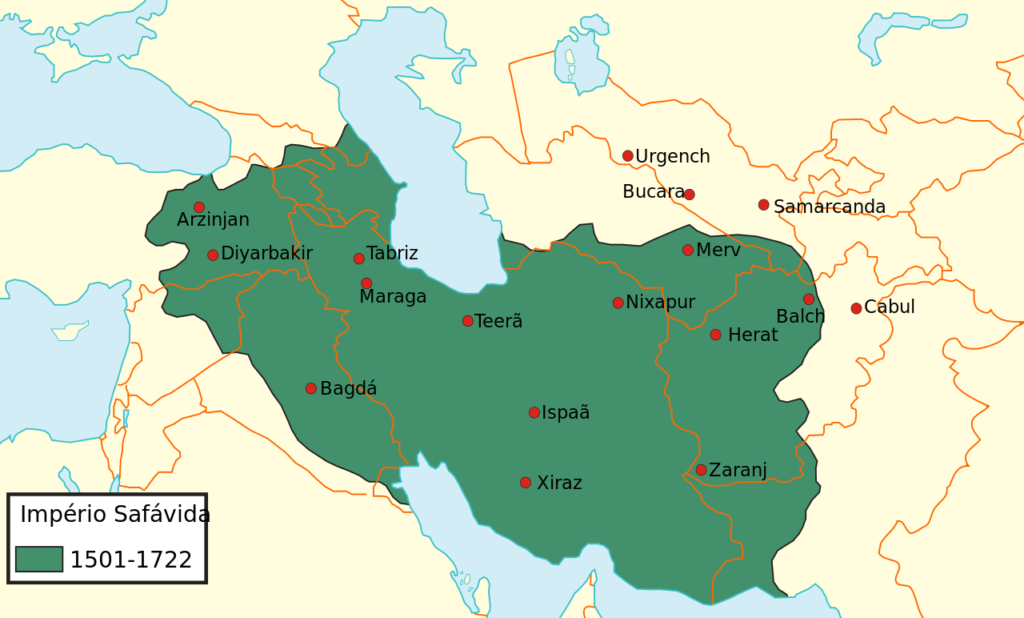Safavid Dynasty (1501–1736)
The Safavid Dynasty was one of the most influential and powerful dynasties in Iranian history, marking the beginning of modern Iranian identity. The Safavids are best known for establishing Twelver Shi’a Islam as Iran’s official religion, distinguishing the country from its predominantly Sunni neighbors, especially the Ottoman Empire.


Founding and Early Expansion
The dynasty was founded by Shah Ismail I (r. 1501–1524), who proclaimed himself the Shah of Iran after capturing Tabriz. He traced his lineage to Imam Musa al-Kadhim, the seventh Imam of Shi’a Islam, and claimed both spiritual and political authority. Under his rule, the Safavid state expanded rapidly, encompassing much of present-day Iran, Azerbaijan, Iraq, and parts of the Caucasus.

Religious and Cultural Impact
One of the most transformative aspects of Safavid rule was the forced conversion of Iran’s Sunni population to Shi’a Islam, which fundamentally reshaped the country’s religious and political identity. This move created a lasting religious divide between Iran and its Sunni neighbors, particularly the Ottoman Empire, with whom the Safavids had frequent military conflicts.
Arts, Culture, and Trade
The Safavid period saw a renaissance in Persian art, architecture, and literature. Miniature painting, calligraphy, and carpet weaving flourished, with Safavid carpets becoming highly sought after in Europe. The dynasty also controlled strategic trade routes, including parts of the Silk Road, contributing to economic prosperity.

Golden Age: Shah Abbas I (r. 1588–1629)
The reign of Shah Abbas I is considered the pinnacle of the Safavid era. He moved the capital to Isfahan, transforming it into one of the most beautiful cities in the world, filled with stunning architecture such as Naqsh-e Jahan Square, Shah Mosque, and the Ali Qapu Palace. Shah Abbas also reformed the military by recruiting Georgian, Armenian, and Circassian soldiers and established diplomatic and trade relations with European powers, including the Portuguese, English, and Dutch.

Military Conflicts
The Safavids were frequently engaged in wars with the Ottoman Empire, particularly over control of Mesopotamia (modern-day Iraq). Despite some successes, the Safavids struggled against Ottoman military superiority and the rise of other regional powers, such as the Uzbeks.
Decline and Fall
The decline of the Safavid Dynasty began during the reign of Sultan Husayn (r. 1694–1722), who was seen as an ineffective and indulgent ruler. Political corruption, economic hardship, and military weakness weakened the state. The dynasty eventually fell when Mahmud Hotak, an Afghan tribal leader, captured Isfahan in 1722. Although attempts were made to revive Safavid rule, the dynasty formally ended in 1736 when Nader Shah declared himself Shah.
